 |
| Image by Open Up! |
Brachiopods are actually a PHYLUM of animals. That's right a whole GROUP of animals that most folks have probably never heard of!
 |
| image by Herman Giethoom |
Brachiopods are one of the few groups of marine animals which live ONLY in the Ocean! (Echinoderms being one of the others...)
Some places you learn about some new mammal, but HERE at the Echinoblog? you learn about a whole PHYLUM of animals in five easy steps!
1. What does the name mean?
Brachiopoda, when you break it down: "brachio"= arm and "poda"= foot. Wha? The Arm foot?
_01.png)
The name refers to a structure known as the pedicle. That's the purple stalk bit that is anchoring the animal down to the substrate. This is how the pedicle looks
in the group informally known as the "articulate" brachiopods. Arm refers to the muscular arm-like aspect and "foot" to its use (or disuse) in attatching to the bottoms.
The pedicle manifests in two different ways relative to which of the two major groups of brachiopods you are looking at!
One group has been referred to as the "Articulate" brachiopods. And yes; they are very well spoken thank you. ha ha.you have now caught up with the jokes:
The "articulate" part refers to how the two shells have teeth that articulate with one another.. Here are some hinges on various brachiopod valves.. (images below by Open Up! fr. this awesome photoset fr. the University of Tartu-go take a look at some AWESOME photos! )

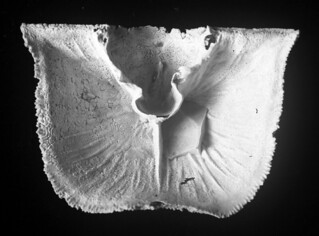

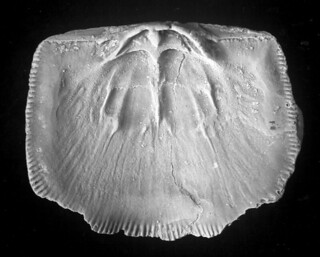
In the "inarticulate" brachiopods the pedicle is this much more developed tail-like feature. the animal is almost kind of a worm. These live in burrows. People eat these! (see below)
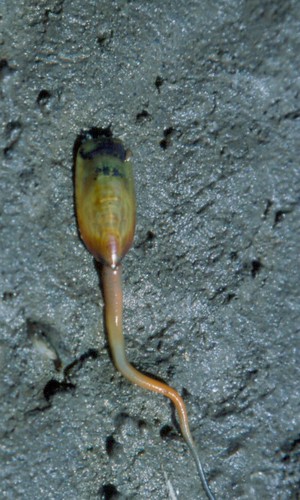 |
| Lingula adamsi Dall by Changhua Coast Conservation Action |
Relative to the animal inside, brachiopod shells are oriented top-bottom vs. those in bivalves, which are oriented left-right
 |
| This image from Kristie Bradford's Historical Geology web page! |
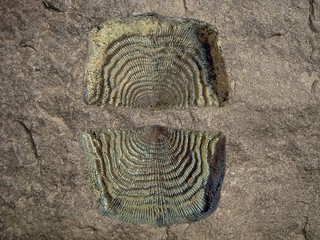 |
| image by mpjones_007 |
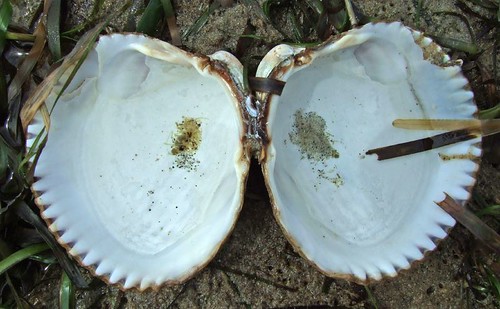 |
| Image by Royston Vasey |
3. What/How do they eat?
Brachiopods have a feathery feeding structure called a lophophore! Brachiopods are basicaly suspension feeders. Water flows in and over the lophophore and tiny finger-like bits called cilia pick the food up!
Here's some reality from the very talented Arthur Anker showing the lophophore with the animal's valves open!
A further GREAT pic of the lophophore can be found here..
And here is the diagrammatic approach that gives you a general idea of what you're looking at.... The animal below has been turned upside down to show parallel orientation with the pic above...
4. In the Paleozoic (roughly 250-500 million years ago), brachiopods were once THE happening invertebrate!
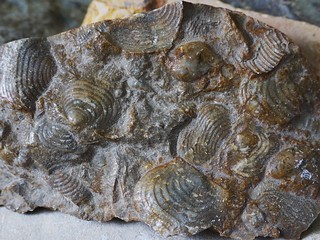 |
| image by David Cartier |
According to the World Brachiopod Database only about 385 species occur today from the ~30,000 described (mostly fossil) ones!!
Many of these species live in out of the way and isolated places...
Here is a gorgeous pic of Coptothyris adamsia from the Sea of Japan
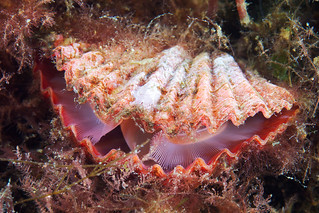 |
| Image by Alexander Semenov |
Here is Laqueus californica from Monterey Bay in some pretty amazingly high densities...
and more from Alexander Semenov: Hemithyris psittacea (Rhynchonella psittacea)
5. Geology! Fossil Brachiopod Shells are sometimes replaced by Pyrite! (aka Fool's Gold)
In the fossil record, the "shells" (called valves) of brachiopods sometimes undergo a process in which they are replaced with pyrite aka fool's gold!
This makes them golden and sparkly!
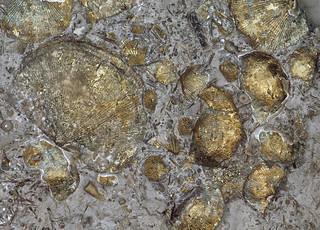 |
| Image by jsj1771 |
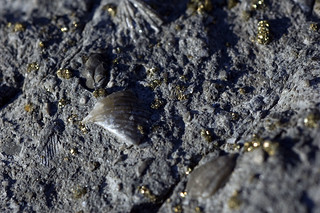 |
| Image by E. Sese |
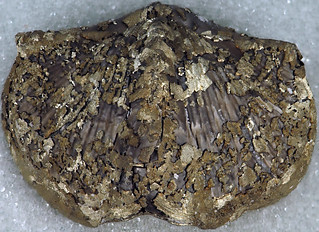 |
| Image by JS1771 |
5a! More Geology Fun! Brachiopod valves are often found in cross sections of rock!
Geologists know the value of a good cross section! Brachiopods are VERY abundant in Paleozoic rock. And if you cut through the shells of one you get some pretty distinctive impressions in the rock..
 |
| Image by Maitri |
Sometimes there are minerals such as agate!
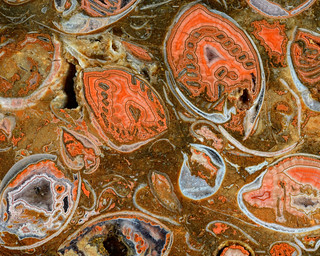 |
| Image by Captain Tenneal |
Brachiopod shells can be pretty dense and sometimes you see a lot of them!

Sometimes you see some neat rare stuff.. like this soft-part preservation of a lophophore!
 |
| Image by Dietmar Down Under |
FUN FACT! People EAT brachiopods!
I wrote about this earlier... but yes, apparently some curry and/or garlic is appropriate....
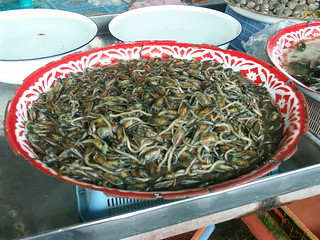 |
| Image by Peter Roopnarine |
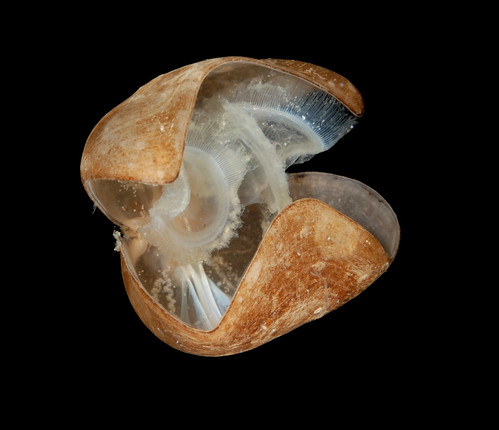


7 comments:
JFC, man, is that the lophophore preserved in the agatized specimens? Wow...
This one actually shows a really nicely preserved spirifera. It seemed too complicated to show it relative to the lophophore.. http://www.flickr.com/photos/56837663@N03/9362574328/in/photolist-fgkDaj-9FmFXV-grSJZv-duuAe3-a7bSgQ-8FD19D
I have fossil brachiopods interesting,brings them to life. thanks
very interesting I have a jar of fossil brachiopods some I found here in Florida, this brings them to life. thanks
Best for knowledge share and want more in other aquatic life. Thank you
Hello, how are you?
My name is Daniela and I am an undergraduate student at the Federal University of Minas Gerais (UFMG) in Brazil and I'm part of an academic monitoring program. It was proposed to the students who are part of the program to create a website about zoology.
I would like to ask you to use the image of the link below in our website:
https://www.flickr.com/photos/artour_a/3630165727/
Thanks!
I learn something new and cool today. Thank you for your educating and entertaining article. Love the pics
Post a Comment